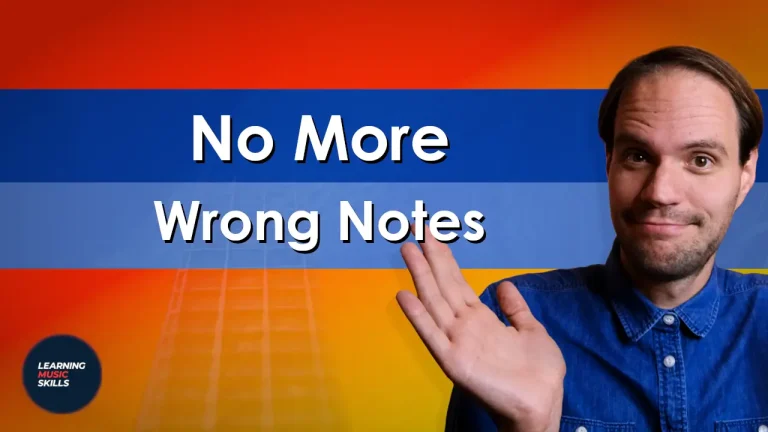Are you tired of using the same boring chord progressions? Then learn to use the Lydian mode to add beautiful colours and unexpected new chords to any major chord progression. So if you ever feel stuck this Lydian modal interchange trick will be perfect for you! Let’s dive in!

The Lydian mode is the favourite musical mode of many songwriters and performers. You can use it to write melancholic
But now you want something different otherwise, you would not be here. The technique of combining different modes in your chord progression has multiple names. It can be called modal mixture, modal interchange or people call it borrowed chords. But in the end, it is all the same. In this lesson, we will be combining Lydian and Ionian. If you want something for your minor chord progressions, check out my lesson about the modal mixture between Phrygian and Aeolian.
Video Tutorial: Combining Lydian and Ionian = Perfect Chord Progressions!
If you want to hear all these examples with real
What is modal interchange or modal mixture?
Modal mixture or modal interchange is a technique of using chords or notes from a (parallel) mode or key to create contrast and variety in your
To give you an idea, some common chords that are often borrowed from the parallel minor mode are ♭III, ♭VI, and ♭VII. In C major, these chords would be E♭, A♭, and B♭ major. Another common chord that is borrowed from the parallel minor mode is iv. This is a minor chord built on the fourth scale degree. So instead of F major what you normally would have in C major, now you have an F minor chord. As you will see in one of my examples, modal mixtures can also be used in melodies.
How do you make a Lydian mode scale?
Music is often in a certain key. This can be A minor or D major for example. So when we talk about
Major scale blueprint / Ionian scale formula
If you follow this formula or blueprint of whole and half steps, then you can make a major scale in any key that you like! Whole step – Whole step – Half step – Whole step – Whole step – Whole step – Half step
Something to remember: when you name the notes each step needs to be a different letter from the alphabet. So you cannot have D and Db or B and B#. It should be D and C# or B and C.

How to make a Lydian mode scale
To make the C Lydian scale, from our major scale above, you just raise the 4th note or the note on the 4th scale degree with half a step. The rest of the notes in the scale stay the same! So the pattern or formula for making a Lydian mode scale is Whole step – Whole step – Whole step – Half step – Whole step – Whole step – Half step

How to make Lydian and Ionian mode chord progressions
Just as with all other modal chord progressions. We will use the Lydian and Ionian scales to find out what chords you can play. You just need to create a chord or triad on each scale degree. And you do this by using the notes from the scales!
How do you make a triad you ask? When you make a chord, just skip one scale tone and choose the next one. So for example in C Ionian, the chord on the first scale degree is C major. The notes are C-E-G. We skipped the tones D and F.
Lydian and Ionian triads


Lydian mode and Ionian harmonies with 7th chords
When we use seventh chords you will have another option that opens up. You will have another chord that will be different between both modes.
If you only have triads then the chord on the fifth scale degree is the same in both Lydian and Ionian/major. But when you turn it into seventh chords then you’ll see a difference.
In C major / Ionian, we have a G Dominant seventh chord while in Lydian we have a G major seven chord.


Chord progression No. 1 in C major (with borrowed D major)
When you want to make your chord progression brighter and more radiant, then combining the Lydian mode and Ionian is exactly the way to go! In Ionian, the chord on the 2nd scale degree is a minor chord. While in the Lydian mode, the chord on the 2nd scale degree is a major chord. When you add this major chord it opens up the progression.


Adding a melody to chord progression No. 1
With your melody, you can accentuate this new borrowed chord. And when you do this it will double the impact. I guarantee it! First, find which note is different between the two chords. Then use that one in your melody when the borrowed chord also sounds. When they sound together you really cannot miss it!


Chord progression No. 2 in D major (with added C#m)
What I love about the Lydian mode and its harmonies is that it has this beautiful and soft minor chord on the 7th scale degree. You can use this instead of the harsh half-diminished chord that you have in the regular major scale harmonies. This minor chord creates a subtle sound that pulls you back to the tonic chord.


Chord progression No. 3 in Eb major (with borrowed Bbmaj7)
When we use seventh chords we can see that the chord on the 5th scale degree is also different. In major we have a Bb seven chord, or Bb dominant chord. While in Lydian we have a Bb major seventh chord.


Conclusion
Whenever you’re stuck on a chord progression or if you don’t feel creative then see if you can borrow a chord from a different mode. Like in this case from the Lydian mode. Modal mixture or modal interchange is easy to use and you will be surprised by the results. You can now add this musical mode trick to your songwriting and composing toolbox. Don’t wait and use them in your next song or composition.
Are you interested in more videos about the musical modes? Check out my other articles and videos on the Phrygian, Lydian, Mixolydian, Aeolian and Dorian modes. Check out my videos on how to make Phrygian melodies.
Your Support Matters
Support new videos by becoming a member and receive benefits in return. Or by giving a one-time donation! Help me provide free
https://www.buymeacoffee.com/musicskills







